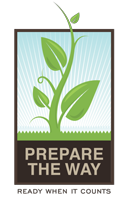How do I begin planning for an emergency?
Once you answer the very first question you can get on you way to planning everything else. With this answer everything else will start making sense and falling in place.
Key Questions
- How many people are you preparing for and how long a period of time?
- Who are the exact people in this number?
- Do they have the right to bring others or pets? Who feeds them?
- Who, what, or how are decisions made? To ration? How much? How long?
- Which ones of the group has immediate access to the food stored?
- Where is food storage kept? Does the Temperature fluctuate much?
- What quantity is agreed on to be extra to help others?
- Who decides who to help? When? How much?
- What food storage is excess for bartering or trade?
- Who executes those trades? Who is worthy trading partner?
- Who do we trust? What are qualifying factors?
- When do we show force to protect the group’s stored supply?
- What if I have more supply than anyone else in the group?
- Does your group have the equipment/tools to utilized stored food? Grain grinder? Pressure cooker? Mason jars w/lids? Buckets? Airtight plastic containers w/lids? Etc…
- Do you know how to re-hydrate dehydrated foods
- Do each of you eat healthy, or will whole grains, legumes, and other fresh foods make you toxic?
- This list could go forever…
- Do you have appropriate cookware and cooking basics (oil, sugar, soda, vinegar, spices) to prepare tasty meals?
Planning Steps to Follow
Step 1 – Decide how many people you need to store food for and for how long. For example, Terry Leverett, Founder of Prepare The Way, is prepared for 10 people for 3 ½ years
ACTION: LIST ALL FOOD ITEMS YOUR FAMILY USES, ESPECIALLY SPICES & CONDIMENTS
Step 2 – Determine to store what you eat and eat what you store Food storage you don’t eat will eventually become old, expired, and no good.
ACTION: PLAN AND DESIGN YOUR FOOD STORAGE AREA TO ALLOW COMPLETE ROTATION (This way your food supply stays replenished.)
Step 3 – Develop a budget for purchasing your list, rating everything by priority 1-10. Identify budget areas you can save on so you can stock up on food priorities NOW!
ACTION: BEGIN PURCHASING ITEMS RATED TOP PRIORITY FIRST, THEN NEXT (View our page entitled, “Best Way To Purchase Each Type of Storage Food” for tips on buying in bulk.)
Step 4 – Evaluate your current home set up to determine if you need to relocate to take proper care of your family. Take needed action, because land will not get cheaper.
ACTION: IF YOU NEED LAND WRITE A LIST OF EXACTLY WHAT YOU NEED. START LOOKING NOW! (You will need a water source, fuel source-wood/trees, or natural gas, grazing land, garden land.)
Step 5 – Decide if you need to grow food to satisfy supply for the length of time you decided on in Step 1. If so, start listing the tools you need as well as determining your seed strategy.
ACTION: STUDY GARDEN TOOL AND SEED SUPPLIERS THEN START PURCHASING TOOLS & SEED (You can view my “Garden Tool List” and “Garden Seed” for lists to help spur your thinking.)
Step 6 – Predetermine if you have extra food to share ahead of time so you have no arguments with your loved ones during an actual crises. You need to be able to insure supply for your own people.
ACTION: SET ASIDE A CERTAIN AMOUNT OF FOOD FOR BENEVOLENCE NOW, WHILE YOUR ABLE (Know how much it is and when it runs out so you know you are protecting your loved ones.)
Step 7 – Predetermine exactly who your group is feeding, if there will be pets, mothers, or children showing up. Leave no room for surprises. Example- who determines when food is rationed?
ACTION: CHART A PREARRANGED ASSIGNMENT OF ATHORITY SO QUICK DECISIONS ARE MADE. (Leave no room for confusion or rebellion with your immediate group.)
Get More!
Our three day Really Ready Weekend Events teach each subject in much more detail. Coming soon to our website are downloadable teaching kits those at Beginner, Moderate, and Intermediate levels. Grow in knowledge with us as we grow our teaching library.

